Three wise and learned cats from folklore
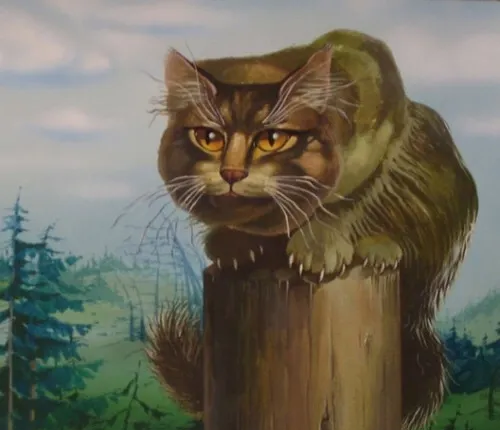
We have a new cat. I'm told he's a Nebelung, which apparently means the same thing as Nibelung from the Germanic legends. When the house next door was demolished, he adopted us instead of going with his original owners (they agreed to this), and now he pretty much runs our house.
In Slavic, Turkish and Eurasian folklore, cats play an especially important role and perhaps this is why so many cats can be seen (and loved) in the streets and public buildings of Istanbul, Warszawa and St. Petersburg (as well as Athens, Kotor and others).
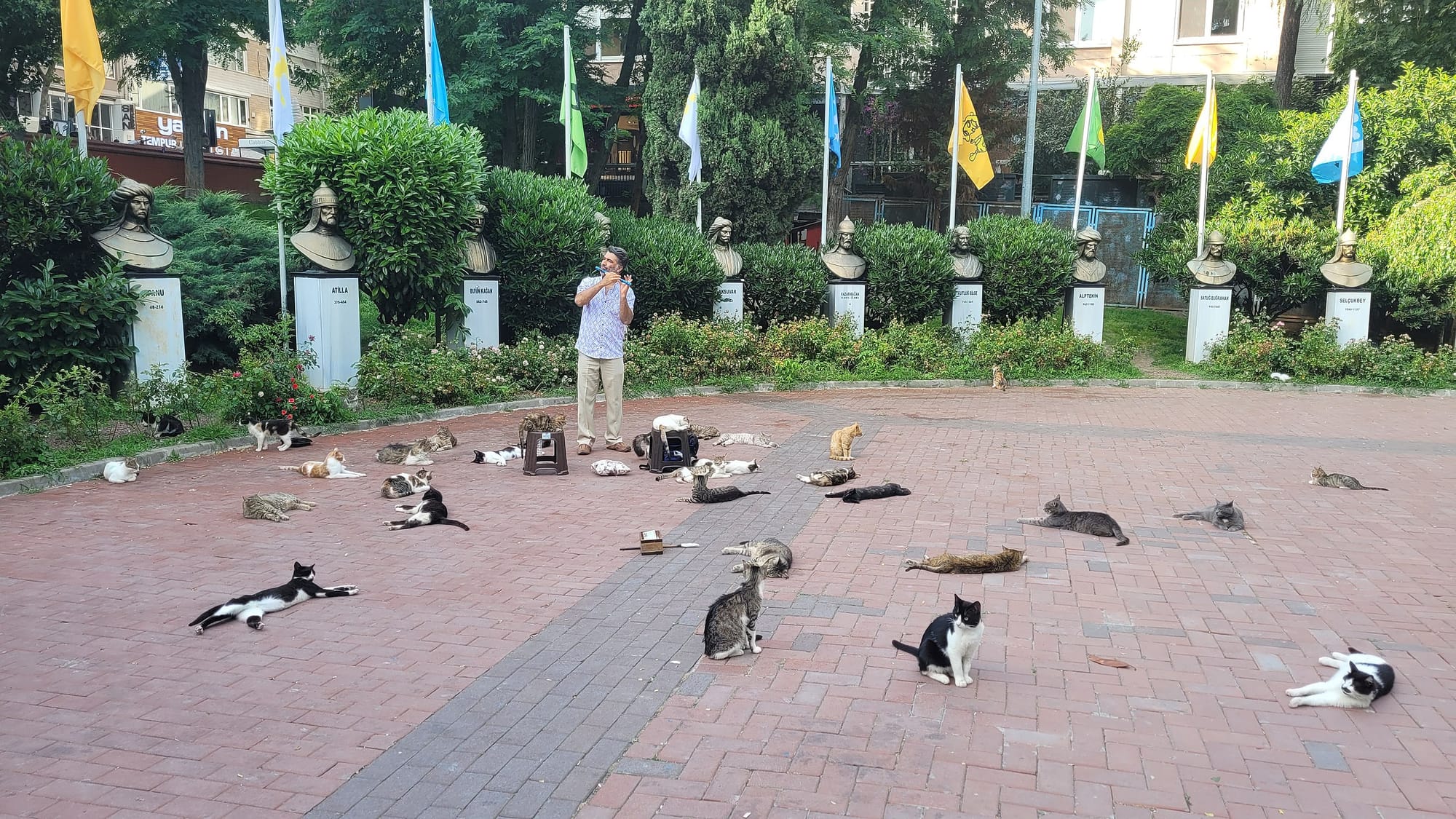
One of the most famous of folklore cats is Cat Bayun, a giant Russian cat who puts in an appearance in the prologue to Pushkin’s epic fairytale poem Ruslan and Lyudmila (1820). Bayun is referred to as a “learned cat” with a magical voice who sings and tells wonderful stories (the word bayun means "storyteller"). In other words, Pushkin was Cat Bayun too. He tells of Lukomorye, a sacred place at the far edge of the world and, of course, there is a cat there:
In Lukomorye a green oak stands, to the oak a chain of gold is tied, and at the chain’s end night and day, a learned cat walks round and round.
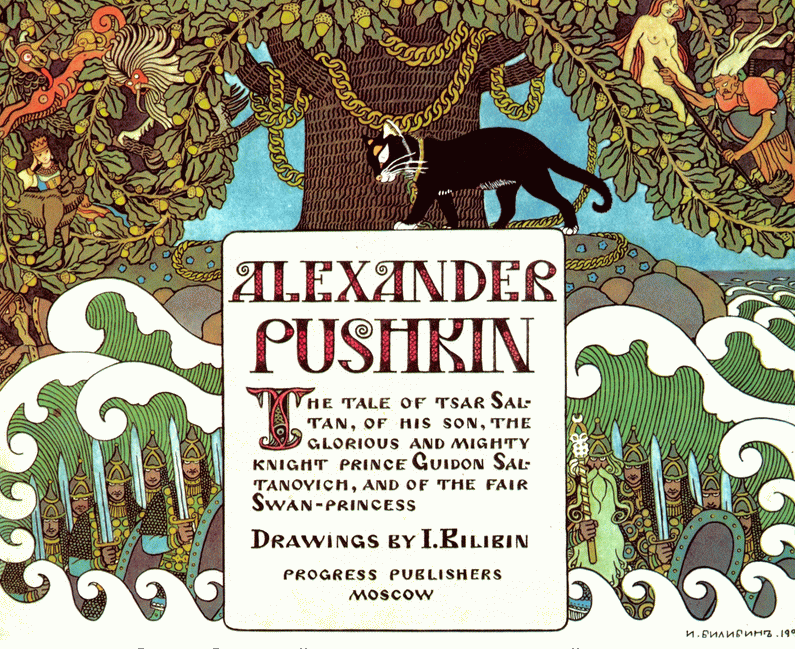
In some versions, Cat Bayun lives in a golden cage on a golden pillar near an enchanted mill; in others he lives with the witch Baba Yaga and is a forest guardian. There are many variants but, at his worst, he uses his mesmerizing voice to lure travelers into a deep sleep before killing them with his iron claws and eating them. However, anyone who manages to subdue Cat Bayun will be healed. I'm reminded of the cat mascots in Ukrainian defensive trenches in the current war with Russia.
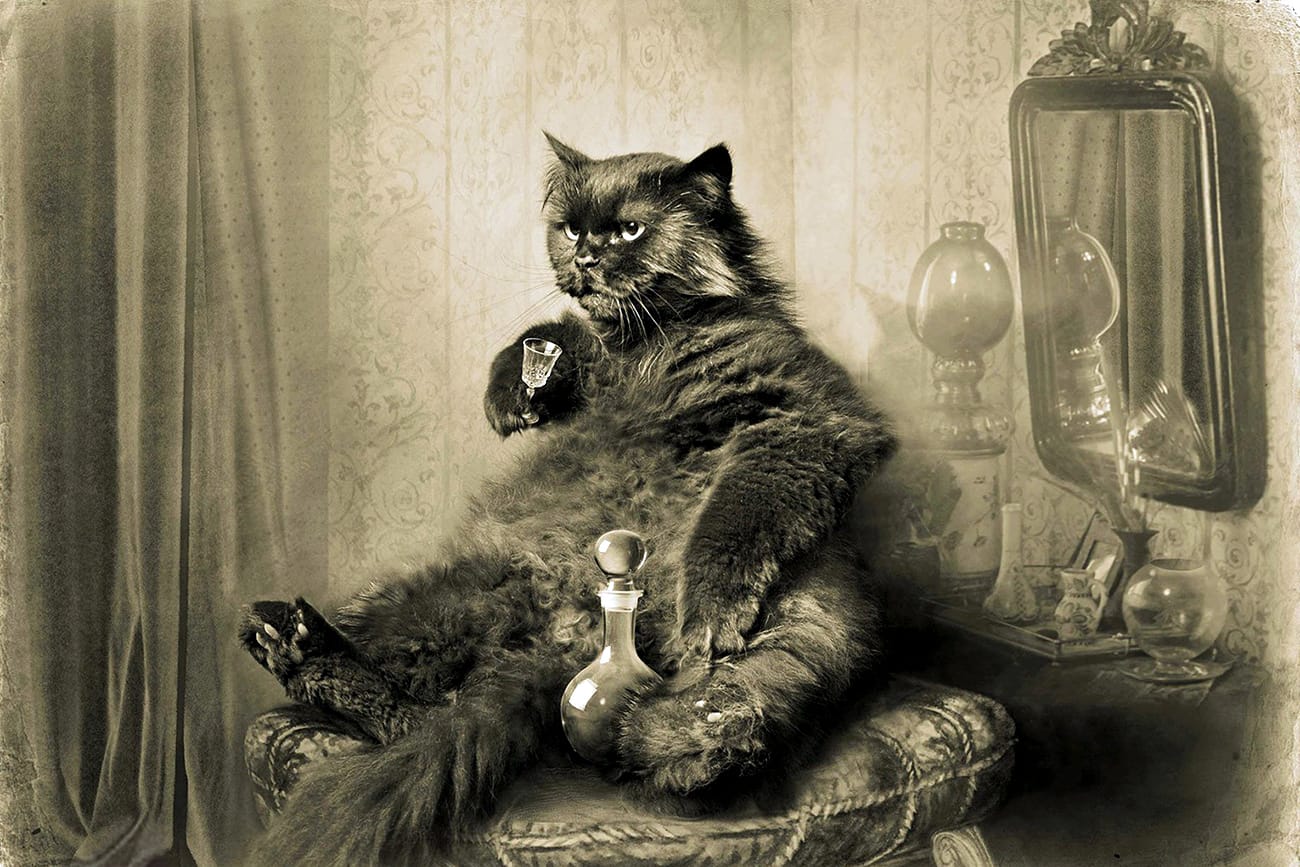
Cat Bayun is said to be a giant, black cat and he pops up as Behemoth, the trickster cat (some say evil cat) in Mikhail Bulgakov's The Master and Margarita (here). He drinks vodka a lot and he likes to light fires...
My favorite character in literature is The Cheshire Cat in Lewis Carroll's Alice in Wonderland, who symbolizes the absurdity, ambiguity and fluidity of reality. He/she/they can disappear and reappear at will, leaving only a grin, representing the unreliable nature of what we see and believe.
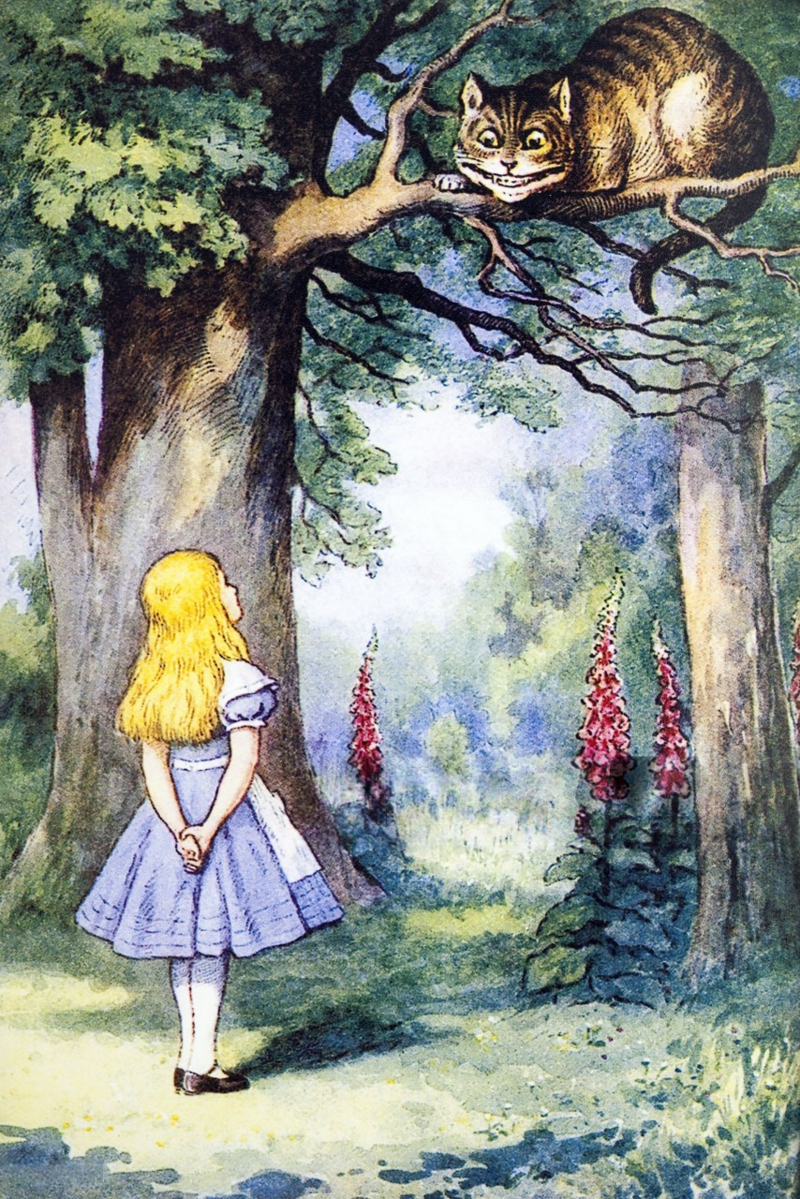
'Would you tell me, please, which way I ought to go from here?'
'That depends a good deal on where you want to get to,' said the Cat.
'I don't much care where —' said Alice.
'Then it doesn't matter which way you go,' said the Cat
The association of a Cheshire cat with grinning predates Lewis Carroll, but the 1865 book made him into a great philosopher... The Cheshire Cat's finest moment is when s/he/it appears at the Queen of Hearts' croquet field and, when sentenced to death, appears without its body. The executioner and the King and Queen of Hearts argue over whether it can indeed be beheaded. It's sublime.
For a favorite pop culture cat, Japan has extensive cat mythologies (maneki-neko, kasha, nekomata), but I chose Jiji from Hayao Miyazaki's Kiki's Delivery Service (1989). I had the pleasure of working on this masterpiece when it was released in the U.S. in 1998.

The film is based on the work of Eiko Kadono and in the Japanese original film, Jiji is female and humble and always ready to help. In the U.S. dubbed version, Jiji is male and sarcastic and not much help at all. The "feel" is very different, but they are equally wonderful.
What's most interesting in the film is when Kiki loses her witch abilities, including the ability to understand Jiji. This occurs as she starts doubting herself. Indeed, Kiki is growing up and no longer needs Jiji as a confidant. This interpretation has been confirmed by Miyazaki and producer Toshio Suzuki. And while I'm praising Japanese quality anime, this (below) was once my daughter's favorite film:
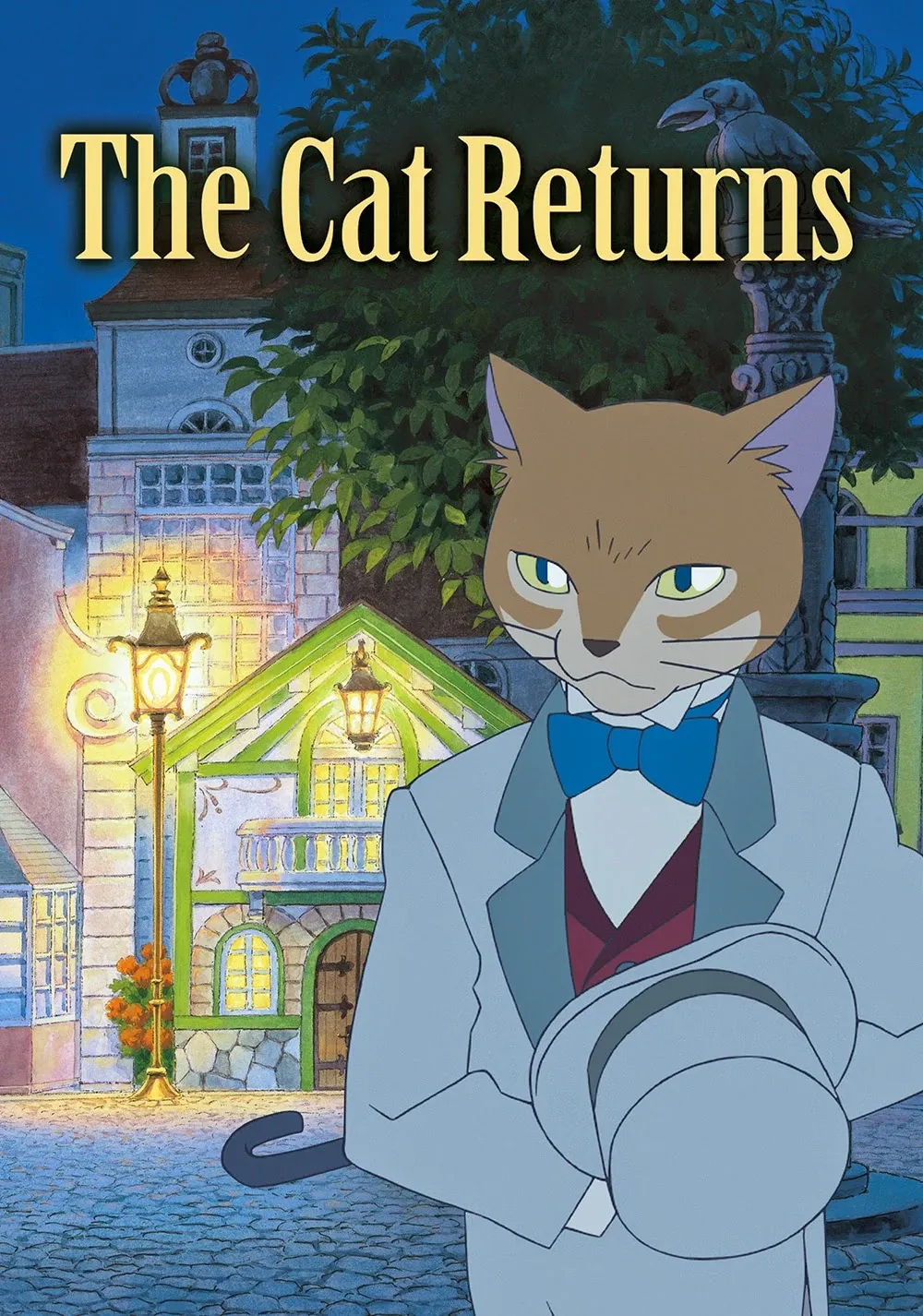
Honorable mention: Bastet from ancient Egypt, the Celtic Cat-sìth, Puss in Boots, and Dr. Seuss' Cat in the Hat.
